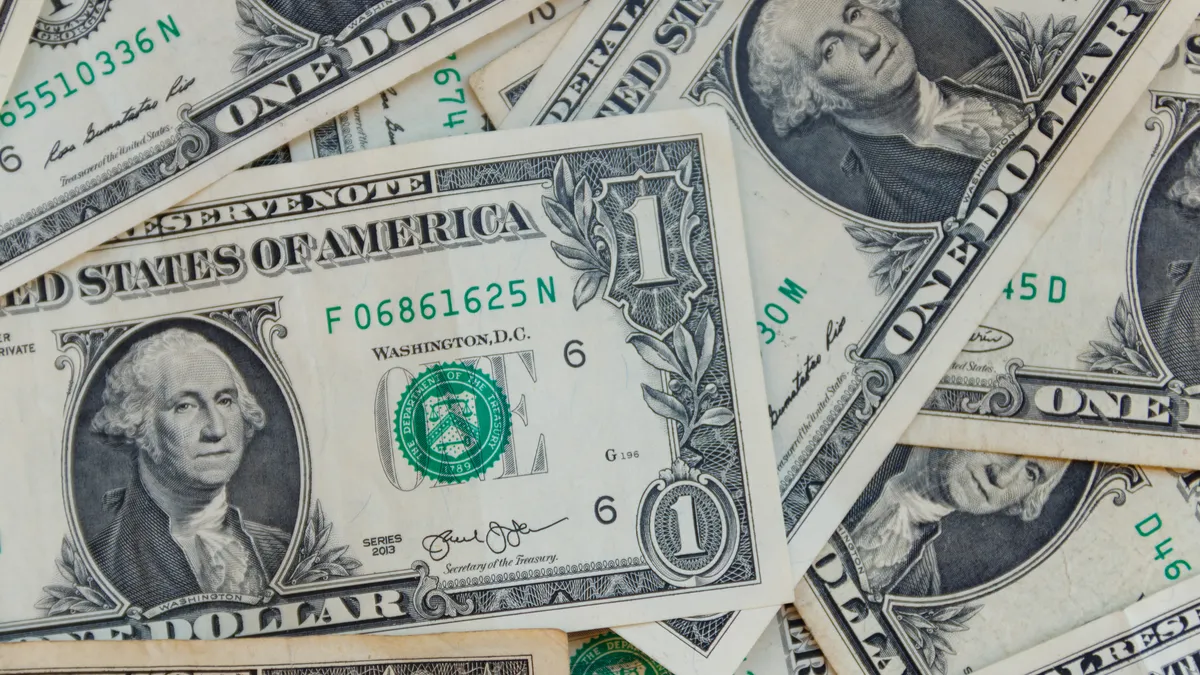Dive Brief:
- The consumer price index rose at a 2.6% annual rate in October compared with 2.4% the prior month, highlighting how the Federal Reserve walks a bumpy path while trying to slow inflation to its 2% goal.
- Shelter costs increased 0.4% during October, fueling more than half of overall price gains, the Bureau of Labor Statistics said Wednesday. The core CPI, excluding volatile food and energy prices, gained 0.3% last month, the same pace as in August and September.
- “This is probably not sufficient to alter the Fed course on interest rates in the next meeting” on Dec. 17-18, Scott Helfstein, head of investment strategy at Global X, said in an email, predicting a quarter-point cut in the federal funds rate. “The last mile on inflation was always going to be the hardest.”
Dive Insight:
Traders in interest rate futures on Wednesday bet that the central bank will take the inflation news in stride, raising the odds that policymakers will trim the main interest rate by a quarter point next month to 82% from 59% on Tuesday, according to the CME FedWatch Tool.
“Inflation is moving sideways on a year-over-year basis, but there is nothing in today’s report that would alarm the Fed,” Bank of America Securities analysts said in a report. “A 25 basis point cut in December firmly remains our base case,” they said. A basis point is one one-hundreth of a percentage point.
The price of used cars and trucks rose 2.7% last month, and energy services gained 1% while services excluding energy services increased 0.3%, the Bureau of Labor Statistics said. The price of food edged up 0.2%.
The trend in consumer prices including food and energy “seems to be confirming the path that we’re on,” Minneapolis Fed President Neel Kashkari said, adding “we’ve made a lot of progress in the past year or so bringing inflation down.”
“Right now, I think that inflation is headed in the right direction — I've got confidence about that — but we need to wait,” Kashkari said on Bloomberg Television. “We've got another month or six weeks of data to analyze before we make any decisions.”
Other Fed officials on Wednesday also voiced caution about how to approach monetary policy in coming weeks.
“I anticipate the Federal Open Market Committee will most likely need more rate cuts to finish the journey,” Dallas Fed President Lorie Logan said.
“But it’s difficult to be sure how many cuts may be needed and how soon they may need to happen,” she said in a speech. “I am keeping an open mind, scrutinizing economic data and financial conditions, and listening carefully to business and community contacts as I assess what next steps may be appropriate for monetary policy.”
Kansas City Fed President Jeff Schmid, also speaking after release of the inflation data, said it’s too early to identify the end point to monetary easing.
“While now is the time to begin dialing back the restrictiveness of monetary policy, it remains to be seen how much further interest rates will decline or where they might eventually settle,” he said in a speech.
Consumers anticipate that price pressures will fall in coming months, the New York Fed found in its Survey of Consumer Expectations.
Median expectations for inflation in 12 months fell 0.1 percentage points in October to 2.9%, according to the New York Fed.
Households anticipate that inflation will ease to 2.5% in three years, or 0.2 percentage points less than their median forecast in September, the New York Fed said Tuesday.















